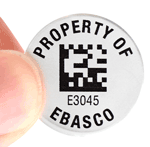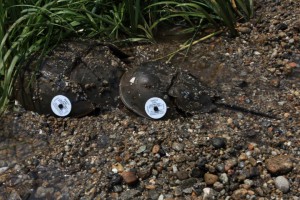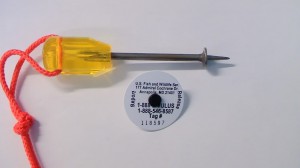How tagging horseshoe crabs saves the world (or at least a few lives)
Ten preschoolers and 15 second graders arrived at Southport Beach in Fairfield, Connecticut, one cloudy morning recently, to take part in a wildlife tagging study. It was low tide as they made their way across the beach, scanning the sand for a glimpse of the brown, helmet-shaped shells that beachgoers up and down the eastern coast of North America know as the horseshoe crab. The crabs were in the middle of their annual spring breeding-season pilgrimage to shore; the kids’ mission was to tag them.
So they traipsed over the wet sand hunting for crabs, guided by Dr. Jennifer Mattei, professor of biology and director of the Professional Science Master’s program at nearby Sacred Heart University. Several of her students, as well as the children’s teachers and parents joined them on the expedition. When they found a crab, the kids gathered round to measure it. Then they’d help a grown-up make a small hole in the lower back corner of the shell with an awl, and insert a specially designed ridged disk that had been pre-marked with a unique identification number. The kids watched as the grown-ups recorded the crab’s ID number and vital statistics in a special notebook to await transcription back in the lab. With that, the crab was released, in the hope that someone would find it, months from now, and phone in with information about where it had traveled.
In a single morning’s work, the 25 kids had joined hundreds of people—adults and children, scientists and civilians—as participants in Project Limulus, a community-based research project that began in 1998 and has since tagged thousands of horseshoe crabs. Nor is this simply an academic exercise; in its 15-year history, the tagging project has played a part in protecting the coastal ecosystem and sustaining several industries—and it might even influence the state’s preparations for the next super hurricane.
How is it that tagging these rather unattractive creatures can accomplish all that? “Horseshoe crabs are both economically and ecologically important at high densities,” says Professor Mattei. “The tags allow us to discover their movement patterns around Long Island Sound.”
And why chart their movement patterns? Well, knowing how horseshoe crabs move around their habitat helps the state manage the population. And that population, according to Mattei, is the basis of not one but two major industries. Horseshoe crabs are harvested as bait, and they are also prized for their blood, which contains a substance that binds with bacteria. When the crabs are harvested, this substance is isolated and used to test for bacterial contamination of vaccines and pharmaceutical drugs—a multi-million-dollar proposition.
Just as important, Limulus polyphemus (the scientific name for the species) plays a key role in the coastal ecosystem, says Mattei, who leads the project with other scientists from Sacred Heart. “The shore birds that migrate in the spring feed on the horseshoe crab eggs,” she explains. And, too, the crabs themselves act as hosts to more than a dozen other species that inhabit the ecosystem.
For both business and ecological purposes, high density — that is, higher numbers of crabs — is a good thing — so much so that the federal government requires states with horseshoe crab fisheries to set aside no-harvest zones to sustain the species. In Connecticut, Project Limulus has found the horseshoe crab’s recent census to be trending low, but it has also identified which of the state’s beaches attract the most egg-laying activity. With this information, the environmental officials have been able to designate these beaches as no-harvest zones, ensuring that both industry and the ecosystem will benefit from a healthy crab population in the future.
The tiny tags used by Project Limulus impart loads of information: where the crab was first found, when, what sex, size, mating status, and condition. The tags also give instructions to beachgoers about what to do when the crab is found: call the phone number on the tag, state the ID number and report the location and date of recapture. Each crab’s travels go into the database and crab by crab, tag by tag, migration patterns emerge.
“We tried many different tags,” reports Mattei. “We tried PIT [Passive Integrated Transponder] tags, which are inserted into the crab’s body, but you can’t see the tag unless you pick up the crab and run a scanner over it.” A good idea for pet owners, but not feasible for a citizen-science project. She also tried sonar tags, which were useful for limited studies, but, she explains “you have to be out in a boat to read them, and each tag costs a hundred dollars.”
Cinch tags were used in the project’s early days, but the disks Project Limulus uses now are from the U.S. Fish and Wildlife Service. Information is recorded with a special waterproof pencil and a write-in-the-rain notebook, says Mattei, adding, “Low-tech works for us.”
And what about Project Limulus influencing hurricane preparedness? You might have read about proposals to construct barriers of boulders and cement—armoring the shore, it’s called.
“Armoring is the death knell for horseshoe crabs,” says Mattei. They need a pathway to and from the sea, so that they can clamber ashore to lay their eggs and then crawl back to the water. She favors artificial reefs instead, which she says can dissipate the ferocity of floodwaters, the way oyster and mussel beds used to. “It’s all connected,” says Mattei. “We can’t close the sea out from the land.”
Category: QR codes














